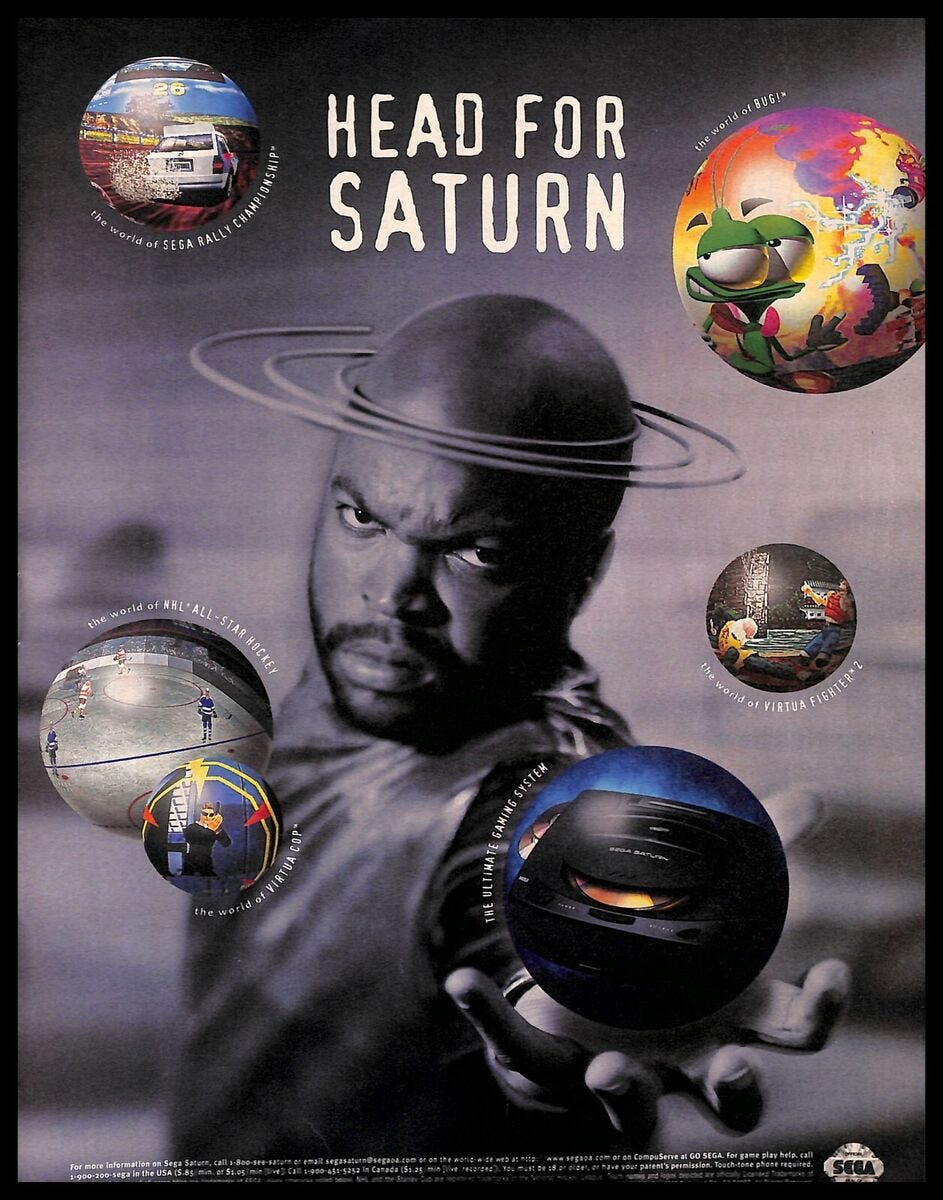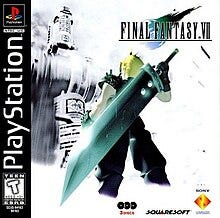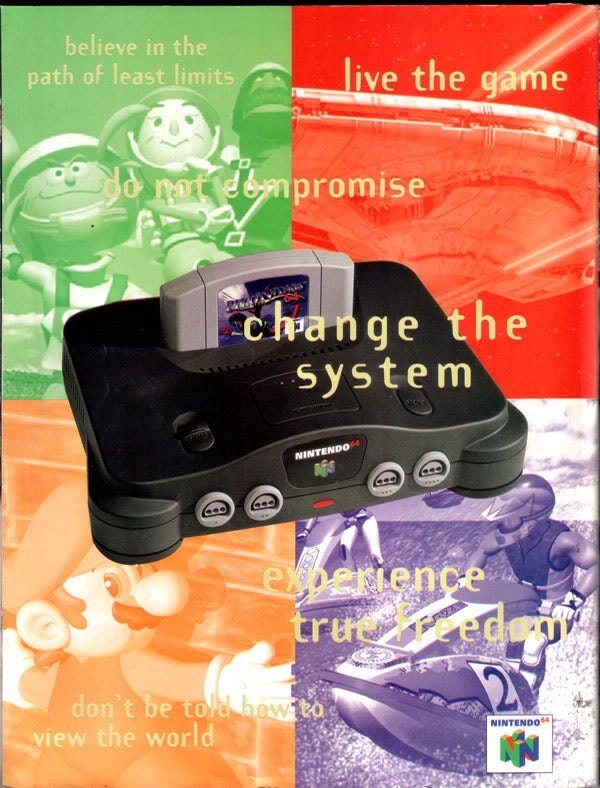Catch Up on the Series
1 - Pressing Start / 2 - The New Industry / 3 - Have You Played Atari Today?
4 - The Great Video Game Crash of 1983 / 5 - Leave Luck to Heaven
6 - Now You’re Playing With Power / 7 - 8-Bit Magic
8 - Let’s Make Lots of Money / 9 - War Drums / 10 - Nintendo vs. Sega
11 - The Revolution Will Be Televised
E3
The Consumer Electronics Show was the best way for video game companies to showcase their products and plans to their consumers. Unfortunately, the organizers of CES regarded video games as an afterthought to the show. Usually, they put their booths in the more inconvenient parts of the show floor or just outside the building. Frustrated with this, a coalition of figures would establish a show focused on gaming. The Interactive Digital Software Association (IDSA), formed due to threats over government oversight during the video game violence congressional hearings, teamed up with GamePro publication’s Pat Ferrell to create the trade show. They also had the help of Sega CEO Tom Kalinske, who pushed for a solitary show for the industry to show their products. They called the show the Electronic Entertainment Expo or, as many would eventually know it - E3.
The first E3 would be one of the most critical events in the industry’s history. With 3D gaming coming up, the big three- Nintendo, Sega, and new competitor Sony- will be at the event to convince investors and consumers to buy their upcoming consoles. Nintendo would mostly focus on finishing up its lineup for the Super Nintendo with titles like Earthbound, Killer Instinct, and Donkey Kong Country 2 showcased. They also featured their new Virtual Console hardware, an on-the-go “virtual reality” device that would later prove to be the company’s biggest gaming failure ever. However, they also showed their new Ultra 64 console in near completion. The system, of course, would later be renamed the Nintendo 64.
Sega and Sony had already released their new 3D-focused consoles in late 1994. Sega came on the stage and shocked the gaming and tech world by shadow-dropping the Sega Saturn to the West. Like that, the Sega Saturn was available to buy in North America, although at the steep price of $399 (about $799+ today’s price!). While the surprise was initially seen as a bold move, it quickly became an issue as Sega surprised some retailers and didn’t ensure they had supplies ready. The retailers they left out of the loop became angry and would refuse or take time to sell the Saturn later on. This left the stage for the newcomer to show how serious they were about becoming a player in the industry and set the stage for what many gamers would call “Who won E3?”.
Sony took the stage after Sega and showed their plans for the North American launch of the PlayStation. They ensured a solid lineup of various genres to attract potential consumers. They positioned Sony’s console as the system for “young adults,” taking a page from Sega’s marketing success against Nintendo. Then, Sony Video Computer Entertainment of America’s Steve Race took the stage and uttered what would become the first “holy shit” moment in E3’s history. He said to the microphone, “Two ninety-nine.” That’s right, PlayStation would be cheaper than Saturn at $299 when it launched on September 9, 1995. That’s about $599+ in today’s price. The stage was set as gaming would enter the 3D era and never be the same again.

The Sega Saturn
The Sega Saturn’s Japanese launch in November 1994 was smooth sailing for the company. They used the popularity of Virtua Fighter in Japan to sell the system and sold over 200 thousand units at launch. When Sony’s PlayStation was released on December 3rd, the Saturn was the more popular system. Sega thought they were about to become the kings of gaming and the newcomer would flame out, despite Sony’s Apple-like status in Japan. However, throughout 1995, Sony eventually started to overtake Saturn as PlayStation began to establish a consumer base in the country. Despite this, Sega Saturn would become Sega’s best-performing Japanese console, with almost 6 million units sold in the country in its lifetime. Sega knew the West would propel them more, so they surprised everyone with the release of the Saturn on May 11th. Retailers were taken aback, and major partners like Best Buy, Walmart, and KB Toys were out of the loop, fracturing their relationships.
Sega leaned heavily on in-your-face marketing and even paid to be featured on more adult-oriented places like Wired and Playboy. The marketing was much more mature and left an opening for Sony to target teenagers and college-aged gamers for the PlayStation. Younger gamers who liked Sega titles such as Sonic were forgotten entirely, and Sega relied on Virtua Fighter, which didn’t have the same popularity as in Japan. Sony kept improving with marketing, game releases, and being cheaper. Saturn still has solid titles like Tomb Raider, Resident Evil, Sega Daytona USA, Nights into Dreams, and Panzer Dragoon. Still, many of these will become more recognized after the system’s lifetime or were more popular with PlayStation.
Eventually, Sega Saturn would become ignored as the PlayStation dominated the industry, and Nintendo’s N64 console would be its closest rival. Bernie Stolar joined Sega and infamously claimed the system was not the future, killing any chance for the console to return. While Saturn proved to be one of many symbols of bad console launches, it eventually had a more respected legacy. The system outsold the N64 in Japan thanks to a great lineup of games that attracted the market. Saturn is now seen as a system that has never had a chance but has some great games. While Sega had one more trick in its pocket, the system would cause Sega's hardware to collapse in the industry.
The PlayStation
Ken Kutagari’s dream of launching a game console finally came true in Japan on December 3rd, 1994. After steady growth in the home country, it went to the States on September 5th, quickly surprising people as a strong contender. Despite being new to the market, Sony took advantage of Saturn's mistakes, and their master plan of attracting third-party developers proved perfectly executed. Sony would eventually get some early hits like Resident Evil (the first of a new horror franchise that still scares gamers today), Ridge Racer (a fast-paced arcade racer), Tomb Raider (introducing the world to Lara Croft), Crash Bandicoot (a mascot platformer that proved to be a fun alternative to Mario), and many Super Nintendo era ports. PlayStation slowly became the status symbol of the console base, a marketing advantage that the console brand still holds today.
The real breakthrough for PlayStation, however, came in the launch of 1997’s Final Fantasy VII. The Final Fantasy franchise had been a top franchise for Nintendo’s systems. Originally, Square had plans to keep supporting Nintendo. However, Nintendo’s surprise decision to keep using game cartridges over CDs quickly changed things. As a result, Final Fantasy VII would come to PlayStation instead of a Nintendo console. The game would become an essential point in the industry.
Final Fantasy VII was released on January 31st, 1997, in Japan and September 7th, 1997, in North America. It would introduce us to one of gaming’s most memorable stories and characters as Cloud Strife joined the eco group of Avalanche to take down the Shinra corporation. From there, the story expanded, revealing Sephiroth as the true antagonist and arguably the most famous non-Nintendo villain in the industry. Characters like Tifa, Aerith, Barrett, Red XIII, and more would become part of gaming’s most significant moments and games. The game's music would give us some of the most famous songs in gaming, including One Winged Angel. There was no doubt that Final Fantasy VII showcased video games as art and the starting point of what would become a golden age of Japanese RPGs, a key part of the PlayStation brand. It would also be the game that turned the series from a popular but niche franchise to one of gaming’s most popular ones.
The Nintendo 64
Nintendo’s Ultra 64 would eventually become their first 3D console - the Nintendo 64. The system would be made with Silicon Graphics powering the hardware. The N64 was a significantly powerful system for its time. Unfortunately, the hardware and games would be held back by storage limitations thanks to Nintendo sticking to game cartridges over CDs. This is about when the company would be known for not jumping on to the latest technology due to fear, cautious strategy, and wanting to wait for the tech to mature more. This decision led to many major third parties backing down in supporting the system, and, as mentioned before, it was how Final Fantasy switched to PlayStation. Despite this, the hype for the new system was still high as Nintendo showcased what would become Miaymoto’s next masterpiece - Super Mario 64.
Shigeru Miyamoto and his team began work on the next mainline Mario in late 1994, planning to launch it alongside the new hardware. Initially, the game would have been more linear and used isometric 3D, similar to Super Mario RPG. However, the team spent numerous months perfecting the character models and camera controls to solve one of 3D gaming’s biggest problems - how to move your character around a fully rendered 3D world properly. Koji Kondo came back to do the music and Charles Martinent was hired to do the voice of Mario. The game would use a hub of Princess Peach’s castle, as the player jumps into paintings to enter big open space lands. From there, players would solve missions to gain power stars as they collected their way to face Bowser. This formula would be the basis for the “collection-a-thon” platformer, a mainstay of the era.
The N64 launched in Japan in June 1996 and then in September for North America. The system retailed at $199 (about $399 today), which PlayStation quickly matched. Super Mario 64 was the first significant game for the system and took the industry by storm as a revolutionary game that would inspire countless developers in the future. Nintendo approached the challenges around 3D gaming regarding depth of field, camera, and controls and seemed to solve most of them with the game. Some of these resolutions would appear in titles such as the next Zelda. The hype when the system launched made it hard to find, with a claim out there that basketball icon Michael Jordan specifically called Nintendo of America to ensure he got one.
Ironically enough, the N64 would have its best sales in North America. Everywhere else, Sony’s PlayStation became the king of the console. Despite this, Nintendo would go on to publish some significantly essential titles for the system. In 1997 alone, the revolutionary first-person shooter Goldeneye would release and be the first example of the genre working in the console space. Many Western third-party titles also got their first taste of console gaming on the N64.
Dawn of a New Era
The video game industry had successfully transitioned to 3D polygonal video games. While 2D sprites are still around in many indie titles today, and the 2D era still has a lot of fond memories, this new change would be similar to when movies went from silent to sound. Sony would release some of the biggest and best games of the era, with a developer finally getting his recognition. Sega would start to pick up the pieces of its failed Saturn strategy. Nintendo, meanwhile, would launch what some would argue is the greatest video game of all time and revive the lagging Game Boy with one the entertainment industry’s biggest phenomenons to date.
Be Nice to All!






Crazy that this was all about 30 years ago! I lived through it! I was there! The 2D-to-3D transition was super awkward, but it needed to happen. Super Mario 64 was revolutionary, even though it's pretty jank these days. Man... crazy.
Thanks for the history, JM!